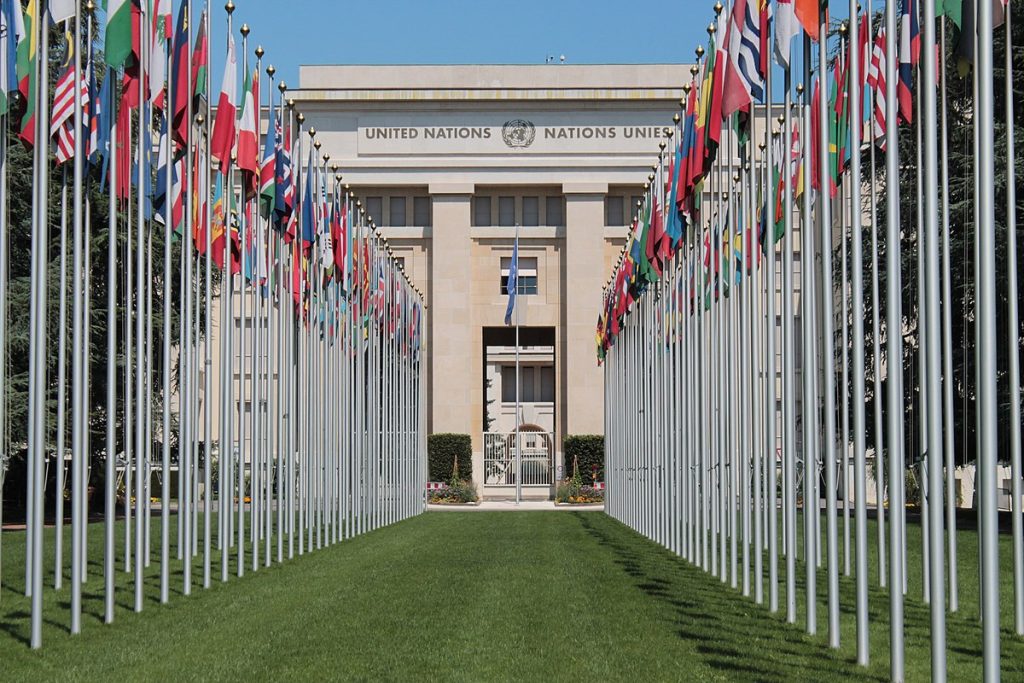Breakthrough report directly links casualty recording and human rights obligations

A breakthrough United Nations report outlining the importance of casualty recording for the protection and promotion of human rights has received nearly universal support at the Human Rights Council’s 53rd session.
The report, which linked casualty recording and human rights obligations directly, received widespread support at the council on July 3rd – with 19 states and observers expressing support for the findings and recommendations. Only one state, Venezuela, expressed objections.
The study will create pressure on states – many of which have previously expressed confusion and hesitancy regarding their obligations around casualty recording – to do more to monitor the civilian impact of conflict.
Setting the tone for the Council session, the report from the High Commissioner for Human Rights recommended that states: “ensure that casualty recording systems and policies are in place and report publicly on all casualties believed to have resulted from hostilities or violence and their circumstances, including for reparations and accountability”.
If implemented, such measures would create a global best practice around casualty monitoring. There is currently little transparency about how states record casualties from their own actions, and state militaries often face accusations of undercounting the civilian impact of their actions.
In the United Kingdom, for example, the Ministry of Defence refuses to publicly disclose details on its own mechanism for casualty recording in the war against ISIS. Airwars is challenging this position in a tribunal later this year.
The importance of casualty recording
The High Commissioner’s report emphasised; “Casualty recording is an important and effective means of delivering on a range of fundamental human rights”. The report further notes: “In addition to disciplinary and accountability measures, such information can be used to foster compliance with international law, including by changing practices and behaviour and enhancing training to this end.”
The US delegation reflected on casualty recording in Ukraine, acknowledging that: “we still do not know the full picture. For that reason, we must advance efforts to create a comprehensive casualty recording system that accounts for all casualties, both civilian and military.”
The delegation went on to emphasise that the US is keen to “aid the international community in developing a casualty reporting mechanism at the international level to contribute to equal access to justice for all”
The support for casualty recording is particularly significant in the context of other successes for civilian protections at the UN last week. In a statement welcoming the report on casualty recording, 56 states of the ‘Group of Friends of R2P’ emphasised the connection between casualty recording and atrocity prevention.
A week earlier, a resolution was adopted at the General Assembly creating an independent institution to examine the fate of all people who are missing in Syria. Since the beginning of the Syrian conflict in 2011, an estimated 130,000 people have gone missing or been forcibly disappeared.
The moves at the UN follow other international assertions on the importance of casualty recording. The Explosive Weapons Declarations, signed by nearly 90 states in November last year, urges states to “record and track civilian casualties, and [ensure] the use of all practicable measures to ensure appropriate data collection.” The US’ Civilian Harm Mitigation and Response Action Plan (CHMRAP), which is widely seen as one of the most ambitious and detailed national policies on this topic, highlights that “developing standardized reporting procedures for operational data to inform civilian harm assessments …will improve DoD’s ability to mitigate and respond to civilian harm.”
The work of independent civil society organisations
Airwars has been collaborating with civil society organisations, particularly Every Casualty Counts and other partners in the Casualty Recorder’s Network, to present evidence for the Human Rights Council report over the last year.
Last year, Every Casualty also released a hard hitting report outlining the requirements for casualty recording across legal regimes. It found that “international humanitarian and human rights law contain extensive requirements regarding states’ duties to account for the dead and missing in armed conflict and other situations of gross human rights violations… these duties are universally binding on all states.”
The work of these organisations was emphasised throughout the report. On the work of Airwars, the report highlighted our work with the US military and Government in particular, highlighting that: “more than 70 per cent of United States internal inquiries into civilian casualties caused by air strikes in the Syrian Arab Republic and Iraq since 2014 have been based on casualty recording submitted by Airwars.”
The report also drew attention to the advocacy work of organisations like Airwars, writing: “…following years of advocacy and engagement based in part on [Airwars’] findings on casualties in Iraq, Libya, Somalia, the Syrian Arab Republic and Yemen, the United States Department of Defense issued the Civilian Harm Mitigation and Response Action Plan in August 2022.”
We welcome the findings of the report on casualty recording and the widespread support it received at the Human Rights Council last week. It brings clarity to the requirements on states and reaffirms, at an international level, the importance of accurately recording and reporting on casualties in warfare.